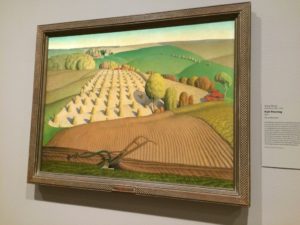 A few days ago, I went to Chicago’s main art museum. A friend, who is a member, had tickets for a lecture on Vanishing Beauty, a traveling exhibition that I wanted to see before it moved on.
A few days ago, I went to Chicago’s main art museum. A friend, who is a member, had tickets for a lecture on Vanishing Beauty, a traveling exhibition that I wanted to see before it moved on.
I considered that Vanishing Beauty was a great name from a marketing standpoint. It sounded more romantic and compelling than the simple description that appeared in the show catalog’s subtitle, “Asian Jewelry and Ritual Objects…from Tibet to Indonesia.”
After the lecture (given by a youngish scholar; a pony-tailed thirty-something man who was in his geek glory), we walked through the exhibition.
We examined roughly cut chips of amber and turquoise embedded in silver. Ritual objects or simply wearable decorations, the descriptions on nearby walls seemed almost as compelling as the objects behind glass.
Somehow, knowing that a silver cape was worn in a traditional wedding ceremony or that a girl couldn’t wear an ear cuff in public until a certain age rendered them more beautiful.
After seeing every item on display, watching short videos on silversmithing in Tibet and reading every wall, my friend left for an appointment and I decided to visit other parts of the museum.
The ‘Tute (as in Art Institute) had another special exhibit, America after the Fall – Painting in the 1930s.
I had not given much thought to what constituted American art, but I indulged in a long walk through the featured gallery. Not yet modern, and certainly not frontier, I could see themes and styles stirring.
Some pieces revealed European influences and training, but what the young American artists chose to fill their canvases with was decidedly different. The Depression was a pivotal time in America and impacted young artists largely as regional experiences.
Georgia O’Keefe’s desert skulls seemed to speak of the struggle to survive in a not very hospitable world.
Some artists took on questions of the times directly in very political art. Migrant workers and other marginalized groups were common subjects, bringing their overlooked plights to cultural consciousness.
Colorfully caricature-ized Harlem nightlifers, dressed to the nines, danced their troubles away.
Edward Hopper and Grant Wood seemed to take a much more internal approach in their works. While very familiar with Hopper’s Nighthawks diner, I got a different dose of isolation in his depiction of a gas station (Gas, 1940).
The iconic roadside beacon was depicted in not quite daylight, not quite evening. It was situated on the edge of the highway and the edge of a forest where lines blurred and next steps are unclear. I imagined many felt this way living in the ’30s.
I was really taken with Grant Wood’s Fall Plowing. I really only knew him as the originator of the often satirized American Gothic where two stern-faced Midwesterners stood with their pitchfork in front of an Iowa farmhouse.
After imagining myself walking into the rolling hills in his idealized farm landscape, I read the curator’s blurb about the piece and followed up at home by Googling information on his farm paintings.
A university art department’s website described this series as a visual balm. The painting featured repetitive patterns, a landscape not populated by people, during times when life was not easy on the farm, yet there was something sensual and soothing about this landscape.
It conveyed a sort of optimism in ways I thought of as patently American.
I loved experiencing the art and allowing myself to feel whatever came up. Then I loved reading about what I saw. What critics thought the artist intended, what was happening in the world when something was created made me appreciate my feelings even more.
That some things belong with other things because they were born in same era, or hail from the same geography, or because they are the same hue or in the same musical key is a kind of beauty.
Things have a certain beauty when you can see how they fit together.
Giving something meaning by placing it in a historical or aesthetic context is no small thing.


Leave a comment